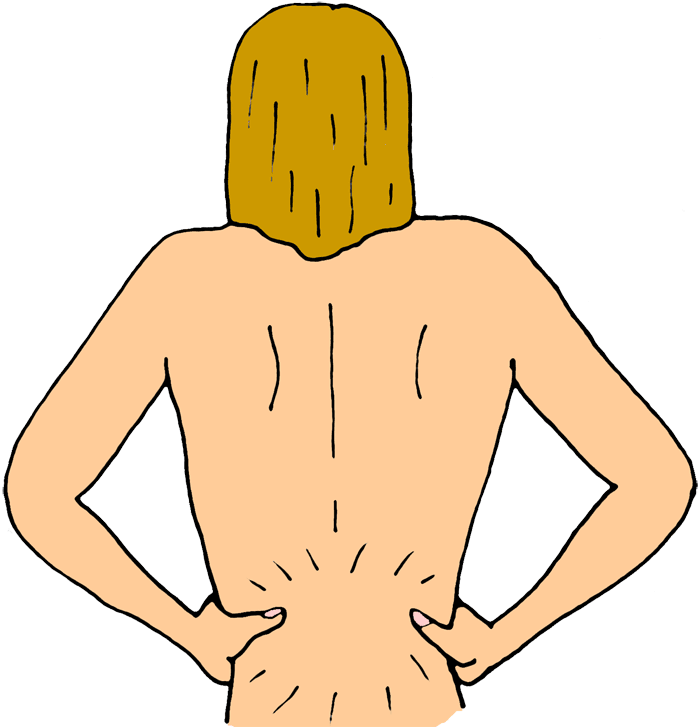RCT of Naproxen Combined with Cyclobenzaprine vs. Oxycodone for Acute Low Back Pain
viernes, diciembre 04, 2015
|
Best Treatment for acute low back pain: Randomized controlled trial of naproxen combined with Cyclobenzaprine vs. oxycodone/acetaminophen vs. placebo
JAMA 2015; 314 (15): 1572-80.
 Methods: randomized controlled trial, a 3 group study to determine the efficacy of a variety of treatments for atramatic, non-radicular low back pain of less than two weeks duration. The interventions studied were adding oxycodone/acetaminophen or cyclobenzaprine (as a muscle relaxer) to Naproxen 500 mg bid on pain and functional outcomes at 1 week post presentation for treatment. All participants were given naproxen 500 mg b.i.d. Additionally, they were randomized to receive either 60 tablets of one of the following: placebo, cyclobenzaprine 5 mg, or oxycodone 5 mg plus acetaminophen 325 mg. Patients were told to take the naproxen twice daily for 10 days and one to two of their secondary tablets every eight hours as needed for their low back pain. Their symptoms were evaluated using the Roland Morris Disability Questionnaire (RMDQ), a 24 item questionnaire used to determine degree of low back pain and functional impairment, with 0 implying no functional impairment and 24 indicating maximum impairment.
Methods: randomized controlled trial, a 3 group study to determine the efficacy of a variety of treatments for atramatic, non-radicular low back pain of less than two weeks duration. The interventions studied were adding oxycodone/acetaminophen or cyclobenzaprine (as a muscle relaxer) to Naproxen 500 mg bid on pain and functional outcomes at 1 week post presentation for treatment. All participants were given naproxen 500 mg b.i.d. Additionally, they were randomized to receive either 60 tablets of one of the following: placebo, cyclobenzaprine 5 mg, or oxycodone 5 mg plus acetaminophen 325 mg. Patients were told to take the naproxen twice daily for 10 days and one to two of their secondary tablets every eight hours as needed for their low back pain. Their symptoms were evaluated using the Roland Morris Disability Questionnaire (RMDQ), a 24 item questionnaire used to determine degree of low back pain and functional impairment, with 0 implying no functional impairment and 24 indicating maximum impairment.
Outcomes. Outcomes were measured at one week following discharge from emergency room. Baseline RMDQ scores in all 3 groups were equal. At one week after discharge, the mean RMDQ improvement was 9.8 in the placebo group, 10.1 in the cyclobenzaprine group and 11.1 in the oxycodone acetaminophen group; between group differences in RMDQ improvement was not significantly different between cyclobenzaprine and placebo and between oxycodone/acetaminophen and placebo. There was also no significant difference between oxycodone/acetaminophen and cyclobenzaprine outcomes.
Both cyclobenzaprine and oxycodone/acetaminophen were associated with increased rates of adverse events compared to placebo. 33% of those on cyclobenzaprine and 40% of patients on oxycodone/acetaminophen developed an adverse event (constipation, abdominal symptoms, etc.) as did 21% of patients on placebo.
Conclusion: in patients with acute atramatic non-radicular low back pain, the addition of cyclobenzaprine or oxycodone/acetaminophen to naproxen did not improve functional scores or pain at one week.
Discussion: Acute low back pain is one of most common diagnoses seen in primary care. This randomized controlled trial done in emergency room may not completely reflect the patients we see in our office but still offers a very valid and important understanding of how we should treat acute low back pain.
To improve outcomes on a standardize questionnaire, adding any agent to naproxen 500 mg twice daily was not effective. Assuming this is valid, when is adding another agent to naproxen indicated? This most commonly occurs when the patient is having trouble sleeping because of the pain. Here, trying physical modalities (like physical therapy or a manipulative method) should be considered. Adding a sedating agent at bedtime, like cyclobenzaprine, might be beneficial to help the patient sleep, but is unlikely to improve other disability outcomes.
The risks associated with narcotics use in acute low back pain (converting acute to chronic low back pain, constipation, opioid dependence, death from overdose, etc.) make the finding here of great import. Narcotic use does not improve anything but short term pain control and was not found effective here. To address pain that does not improve adequately with the naproxen, consider adding acetaminophen (1000 mg PO every 6 hours) to the naproxen; it is safe, effective and without any of the risk or adverse concerns.
This well-done study door sheds light on how we should approach atramatic acute low back pain. An anti-inflammatory should be used for pain and disability prevention. Following national guidelines, no radiologic studies are indicated unless the patient is under 18 or over 50 (and even then their benefit is limited.) Limiting bed rest and encouraging early ambulation and return to normal activities are critical. Physical Therapy or manipulative therapies may be employed if conservative measures do not improve conditions. All patient should be reassured that the vast majority of patients will have their back pain resolved over the following 5 to 6 weeks. Now we need our peers in the ED to heed this message.